USS_X1
USS X1 X-Craft
 During the World War Two the US Navy had not shown any real interest in midget submarines. Submarine activities were instead focused on relatively large long ranged ‘fleet submarines’ for patrols in the Western Pacific. With the fall of the Axis powers many ‘sneak craft’ such as the German Biber and Seehund midget submarines and Italian Maiale human torpedo found themselves in American hands. Combined with notable successes of some British and Italian craft, the US Navy finally found time to look seriously at the concept. Thus the USS X-1 was born. It is a very interesting yet often overlooked deviation in the US Navy’s submarine history.
During the World War Two the US Navy had not shown any real interest in midget submarines. Submarine activities were instead focused on relatively large long ranged ‘fleet submarines’ for patrols in the Western Pacific. With the fall of the Axis powers many ‘sneak craft’ such as the German Biber and Seehund midget submarines and Italian Maiale human torpedo found themselves in American hands. Combined with notable successes of some British and Italian craft, the US Navy finally found time to look seriously at the concept. Thus the USS X-1 was born. It is a very interesting yet often overlooked deviation in the US Navy’s submarine history.
Original artwork. CLICK for high-resolution image.
Initial plans were drawn up for the construction of four X-Craft in the late 1940s, with production to begin in the early 1950s. Interest was such that British XE-7 X-Craft was briefly loaned to the US Navy in 1950 and participated in harbor defense drills, penetrating US defenses along the East Coast. The UDTs (Underwater Demolition Teams) were shown the ropes and practiced locking out of the ‘wet and dry’ chamber. For the exercises, XE-7 retained its Royal Navy crew, but serious consideration was given to taking out a more permanent loan of her sister-boat XE-9. Instead it was decided stick to building an X-Craft to US designs although the project was scaled back to just a single craft which would be smaller than the original specifications. A single X-1, built by Fairchild Aircraft, was launched in 1955.

A British X-Craft running on the surface. This is a later X-51 class ‘Spiggen’ in service with the Swedish Navy. Photo via Roger Odd
Get The essential guide to World Submarines
This Covert Shores Recognition Guide Covers over 80 classes of submarines including all types currently in service with World Navies.
Check it out on Amazon
Design
The USS-X1 (aka SSX-1) was to be more advanced than the British craft and featured a closed-cycle hydrogen peroxide diesel engine which was similar to that used on the wartime German Type-XVII coastal submarine. On the surface the diesel engine could be operated using an air inlet, but it could also be used submerged using oxygen generated by the catalytic decomposition of the hydrogen peroxide. At the time several submarines on both sides of the Atlantic were being used to test these engines which had been pioneered by German inventor Hellmuth Walter. Hydrogen-peroxide, the same chemical used to bleach hair, was carried in rubber bags in the bow of the submarine surrounded by seawater. The closed-cycle engine promised high underwater speeds and removed the need to surface, but it was also highly dangerous and something of a liability, as X-1 was later to find out.
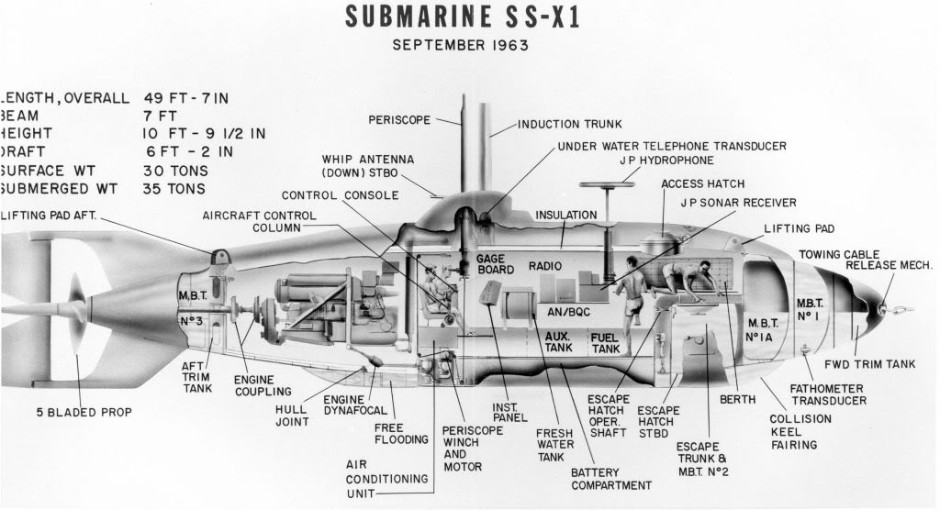
Illustration from Fairchild’s archives, via Warbird Information Exchange.org. The hydrogen-peroxide was stored in the tank labeled M.B.T No.1A (Main Ballast Tank).
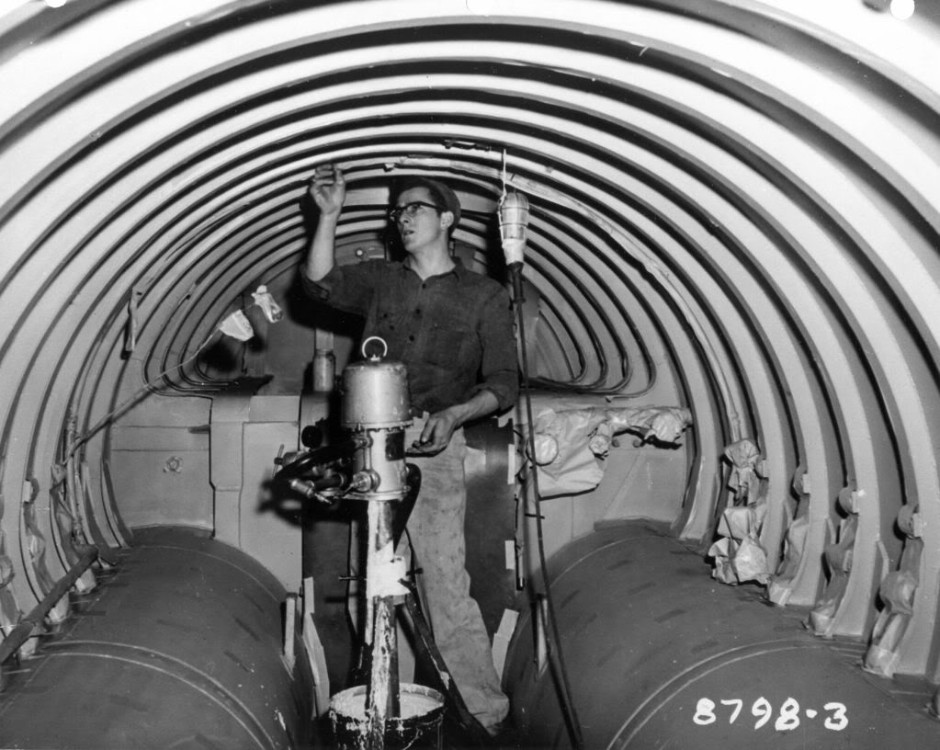
USS X1 under construction a Fairchild facility. This photo is looking forward from the control room area. The domed structures either side are fuel tanks, and the raised platform behind the workman is the bunk, below which is a diver lock-out chamber with moon-pool exit. Photo from Fairchild’s archives, via Warbird Information Exchange.org.
At 50ft (15.1m) she was almost exactly the same length as a British X-Craft, but her hull was slightly more spacious, giving her a wider beam. The designers had noted the cramped conditions of the X-Craft and the difficulty of operating it with only two men. The X-1 was therefore designed so that it could easily be controlled by a single man, and even had duplicate controls and two periscopes to increase operational efficiency.
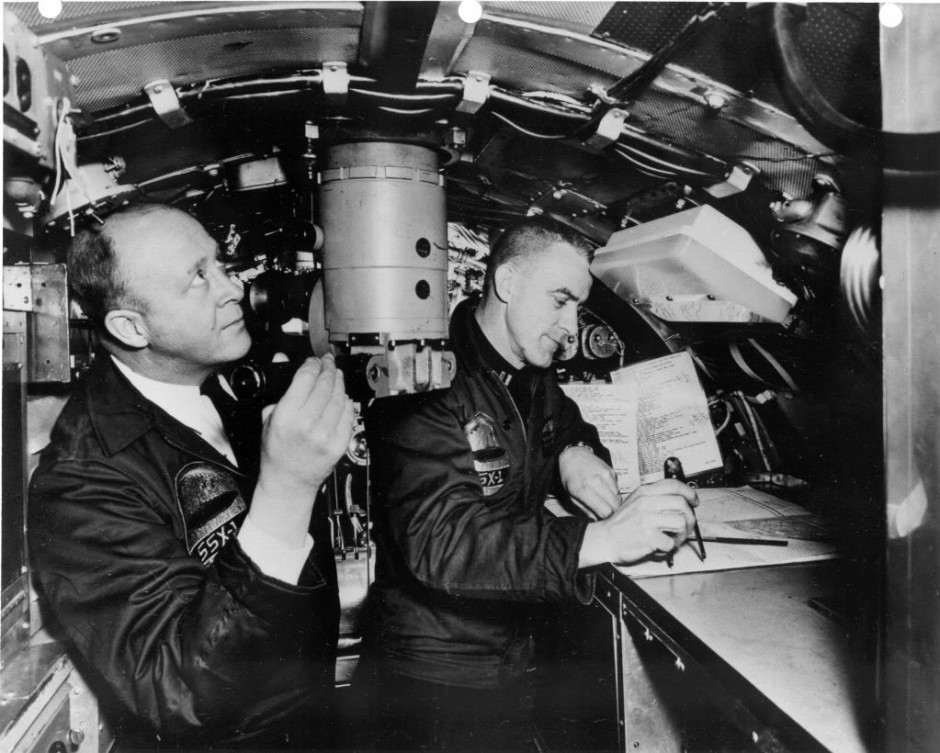
The control room was barely big enough for two men. Photo from Fairchild’s archives, via Warbird Information Exchange.org
.
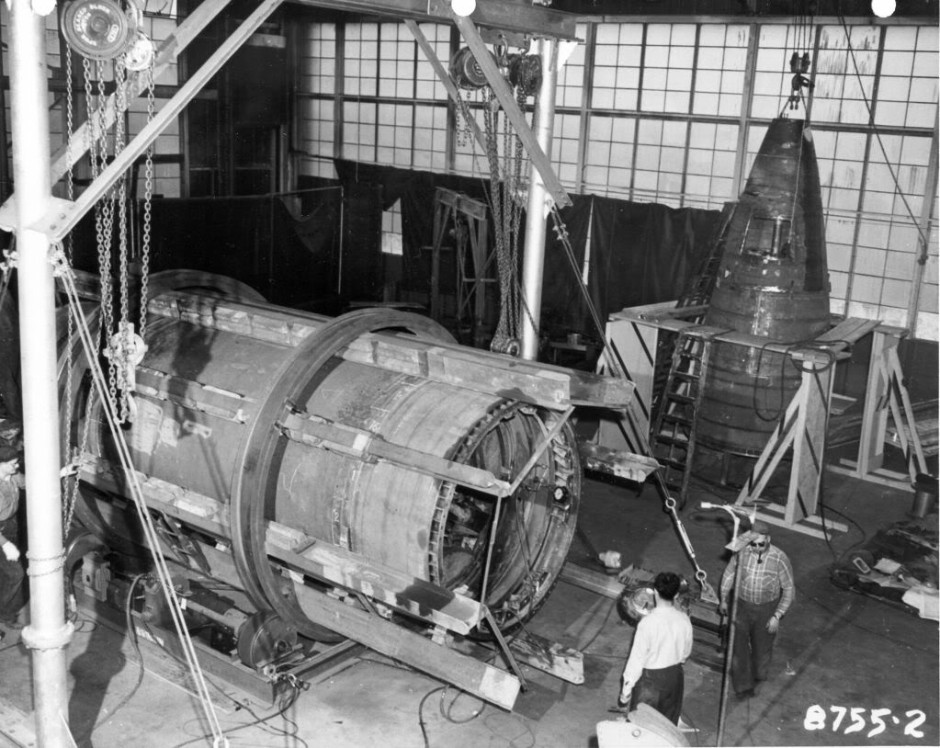
USS X1 under construction a Fairchild facility. Photo from Fairchild’s archives, via Warbird Information Exchange.org
.
Whereas the X-craft had a boat-like bow, the X-1 opted for a more modern rounded nose. Despite this, her performance was not much different with 5kt surfaced and 6kt submerged. Also, unlike the British X-Craft, forward hydroplanes were added to the streamlined casing to improve maneuverability, even though this would make it more difficult to pass through net defenses.
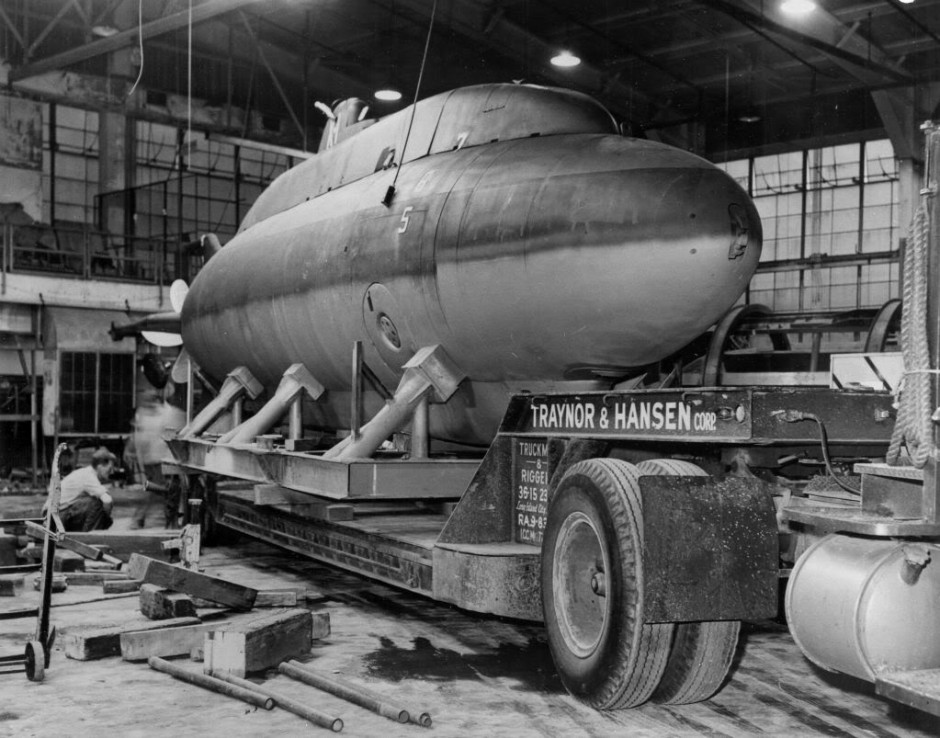
USS X1 at a Fairchild facility. Photo from Fairchild’s archives, via Warbird Information Exchange.org.
There was a snort mast/snorkel housing but no sail, although when the boat was running on the surface a section of the forward casing could be hinged up to provide protection to the captain. Another innovation, which was ahead of its time, was the inclusion of a diver lock-out chamber which was exited via the bottom rather than the top, thus reducing the air bubbles released. The hatch for this chamber was on the lower starboard (right) side of the hull near the bow.
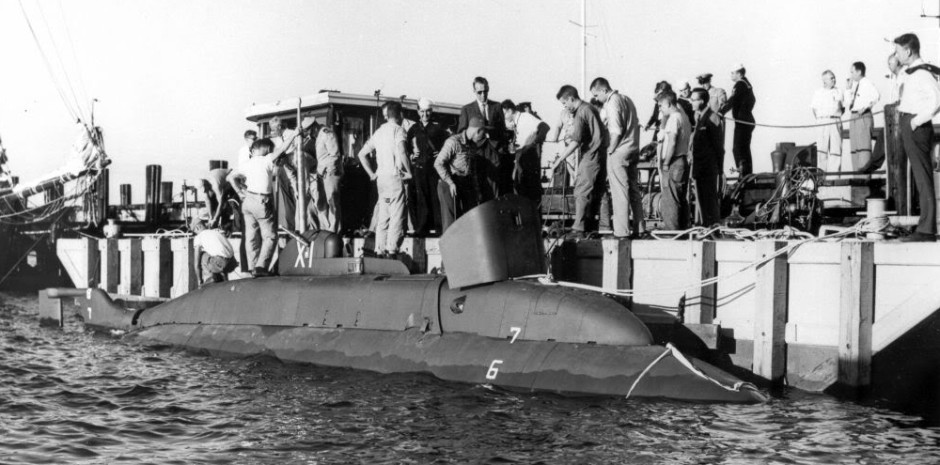
USS X1 during trials. Photo from Fairchild’s archives, via Warbird Information Exchange.org
Mission
Like the XCraft, she was intended to attack enemy shipping in harbors using side-mounted charges (type XT-20 1,700lb) which would be dropped below the target vessel. A version armed with torpedoes had been rejected due to the extra weight that would be required.
The ultimate book of Special Forces subs Covert Shores 2nd Edition is the ONLY world history of naval Special Forces, their missions and their specialist vehicles. SEALs, SBS, COMSUBIN, Sh-13, Spetsnaz, Kampfschwimmers, Commando Hubert, 4RR and many more.
Check it out on Amazon
The UDTs were interested in using the X-1 for beach reconnaissance and beach clearance much like how the British had used the X-Craft. They correctly reasoned that the dry confines of the midget submarine were a great improvement over the wet submersibles used at the time, and that missions could be conducted more covertly and more safely than with the fast landing craft and rubber boats then in use. The limitation, of course, was that only two divers could be carried by the X-Craft but this could be remedied. During her visit to the US in 1950, XE-7 had validated the concept, and it was suggested that two wet submersibles (Swimmer Delivery Vehicles or SDVs, although the term was not in use at the time) could be carried to further enhance the capability, something that was demonstrated back in England later that year with the Chariot trials. The X-1 type could carry a four-man UDT team and some two tons of explosives, enough to clear 400 yards of even the most heavily fortified beach. The UDT wanted four X-1s to support UDT-2, but the Submarine Force was unconvinced about providing the UDTs with dedicated midget submarines. Submarines were their territory and under no circumstances were submarines belonging to UDT to be tolerated. Only one midget submarine was to be built, and it was to be a Submarine Force boat.
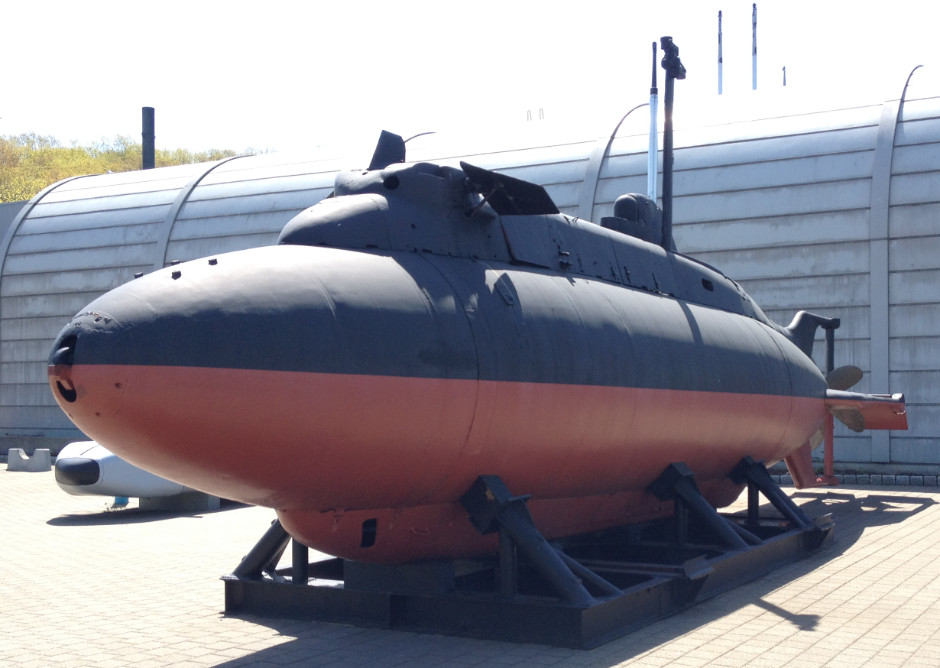
Fate
Disaster struck on 20th May 1957 when the hydrogen-peroxide bags blew up. The explosion was powerful enough to blow off the whole bow section where the bags were housed. Fortunately, no one was seriously injured. With hindsight this should not have been unexpected as the other hydrogen-peroxide equipped submarines around the world also suffered explosions and numerous teething problems. The Royal Navy had two boats, HMS Explorer and HMS Excalibur, which were tellingly nicknamed HMS Exploder and HMS Excruciator. Two years before the accident on X-1, the British submarine, HMS Sidon, had been lost due to an experimental hydrogen-peroxide torpedo exploding, with the loss of thirteen men. X-1 survived the explosion, mainly because the hydrogen-peroxide bags were mounted outside the pressure-hull.
X-1 was refitted with a regular diesel-electric drive. There was no rush to get her back into service and with X-1 inactive, any remaining hope of UDT getting midget submarines died. The success of the nuclear powered submarines had changed the game and interest in hydrogen-peroxide air-independent engines immediately disappeared. Understandably given the revolution in offensive potential, everyone in the US Navy Submarine Force was looking at nuclear powered ocean-going submarines and there was no longer any interest in midget submarines. When X-1 was returned to service in 1960 it was strictly as an experimental submarine, painted in lurid colors to test observability.
She was decommissioned in 1973 and is now preserved at the Submarine Force Museum at Grotton, Connecticut, USA. Entry is free and the museum is HIGHLY recommended.
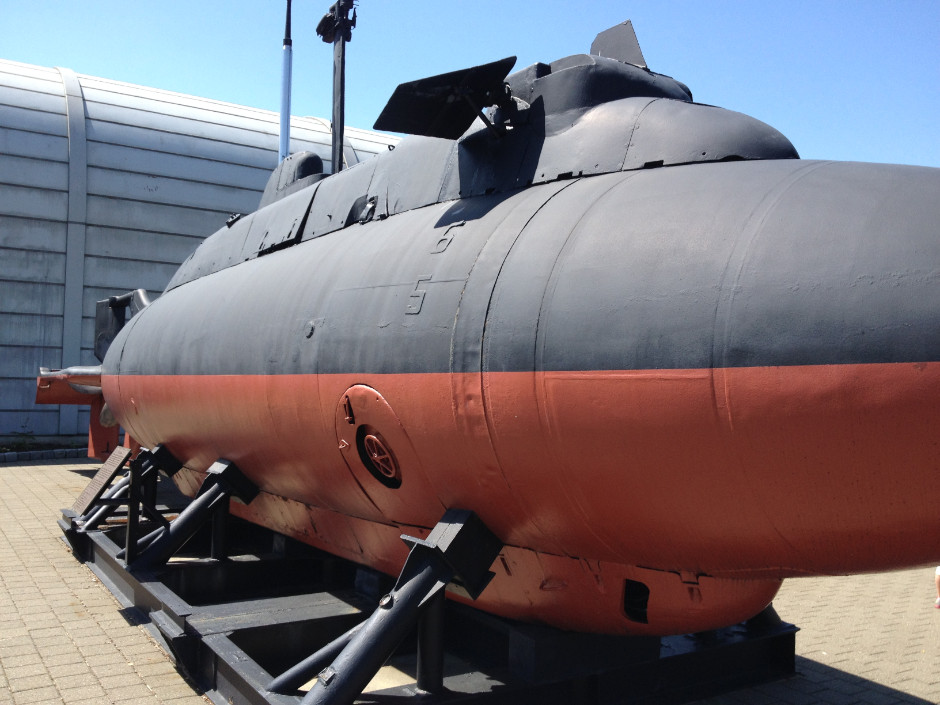
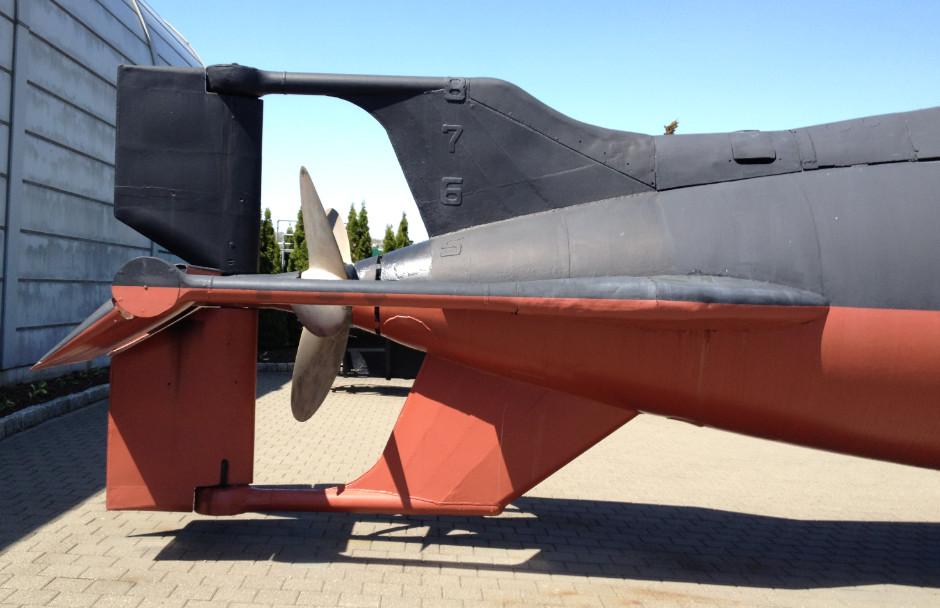
Related articles (Full index of popular Covert Shores articles)

 Project 617 ‘WHALE’ AIP Submarine
Project 617 ‘WHALE’ AIP Submarine

 USS Jimmy Carter (SSN-23) Special Mission submarine
USS Jimmy Carter (SSN-23) Special Mission submarine

 USS Grayback Special Forces host submarine
USS Grayback Special Forces host submarine

 Soviet Project 1015 ‘SPLC’ Special Purpose midget submarine
Soviet Project 1015 ‘SPLC’ Special Purpose midget submarine















 World survey of AIP submarines
World survey of AIP submarines

 Barbel Class - the last front-line diesel boats int the US Navy
Barbel Class - the last front-line diesel boats int the US Navy

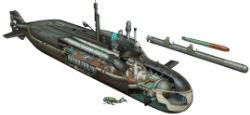 Piranha Class (LOSOS) midget sub
Piranha Class (LOSOS) midget sub

 WW2 German Delfin midget submarine with AIP
WW2 German Delfin midget submarine with AIP




